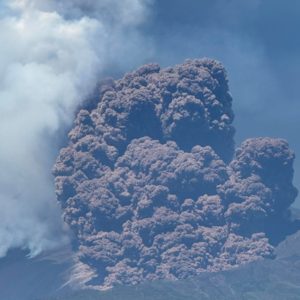One of the deadliest volcanic eruptions of the 20th century reached its terrifying peak on 7 April 1906, with the eruption of Mount Vesuvius after months of increasing activity. More than 200 people are thought to have died in what became known as La Grande Eruzione.
While the volcano is most infamous for the destruction of Pompeii in 79AD, the 1906 event was the worst in modern times, both in terms of lives lost and the volume of material expelled. A year of rumbling culminated in a devastating release of lava and ash that brought destruction to villages on the slopes of the mountain, chaos to Naples, and far-reaching consequences for Italy.
Villages wiped out, Naples in darkness
Warnings had begun earlier in the week. On 5 April, residents noticed the mountain’s water supplies had dried up or turned sulphurous. A series of tremors, including an earthquake on Ustica island, hinted at a major event. By the evening of 7 April, Naples was plunged into darkness under a vast ash cloud.
The worst hit was Boscotrecase, which was buried under a fast-moving river of lava. In San Giuseppe, to the east of the volcano, ash caused the collapse of a church roof where people had sought shelter. The village of Ottojano (now Ottaviano) also suffered heavily, with many homes destroyed.
In the city itself, even robust buildings weren’t safe. The Monte Oliveto market roof gave way, causing multiple deaths. Around 315,000 tons of hot volcanic dust blanketed Naples, making visibility almost zero. Citizens used umbrellas and protective glasses to avoid injury from falling cinders.
A mass exodus followed. Around 150,000 people fled from villages near the volcano, with many arriving in Naples as refugees. Foreign visitors also tried to escape, overwhelming the central railway station.
Heroic efforts and national fallout
Relief efforts were led by the army and the Carabinieri, supported by the Duke of Aosta and Princess Hélène. The Circumvesuviana railway line was cleared after a landslide, and volunteers dug through ash and rubble in hopes of finding survivors.
Among those praised was Professor Raffaele Vittorio Matteucci, director of the Vesuvius Laboratory, who stayed near the crater as long as he could to issue warnings.
After the eruption, Mount Vesuvius lost its cone and 170 metres of height. The appearance of Vesuvius — or Monte Somma, as it is also called — was permanently changed.
The damage was not just physical. With resources redirected to deal with the aftermath, Italy cancelled its plans to host the 1908 Olympic Games. The Games went to London, and Rome would not host the Summer Olympics until 1960.
New emergency plans amid recent earthquakes
As Naples remembers the 1906 eruption today, local officials remain on high alert. A series of recent earthquakes, including swarms in the Campi Flegrei area, have raised concerns about volcanic and seismic activity around the Bay of Naples.
In response, authorities have updated the emergency plans for towns near Vesuvius and Campi Flegrei. These include:
- Improved evacuation routes and signage
- Text alert systems and real-time monitoring
- Regular emergency drills for residents
- A renewed emphasis on public education and preparation
More than 600,000 people live within the so-called ‘red zone‘ around Vesuvius. While scientists say there are currently no signs of an imminent eruption, the 1906 disaster serves as a stark reminder of how quickly conditions can change.
Today, the people of Naples continue to honour San Gennaro, the city’s patron saint, who is credited with protecting them from worse fates in the past. But it is science, planning, and public cooperation that will be most vital if the mountain ever wakes again.





